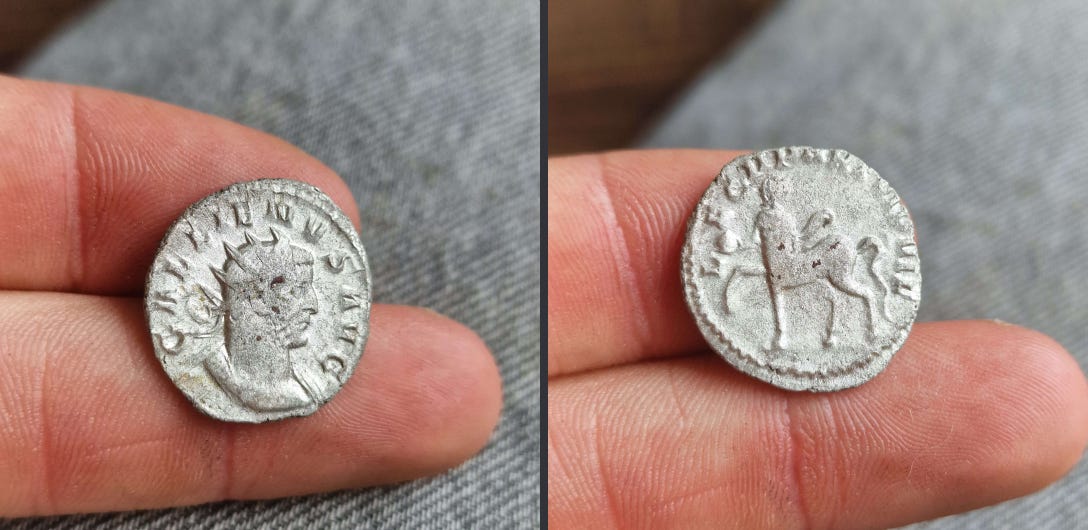Interviewing... 'angles'
Interview #11, talking to a recent graduate in baking from the Netherlands who deals in ancient coins almost daily to help him fund a collection.
Where did you buy your first coin?
My first coin purchase was from a local buy-and-sell website. After finding my first Roman coin with a metal detector, I studied it a bit and looked up similar pieces on that website. I still remember the day when I purchased it, back on April 6 2021. It was a denarius of Antoninus Pius (reigned 138-161 AD), an emperor everybody should have in their collection.
What sort of coins do you collect?
I primarily focus on coins of the Roman emperors Gallienus (reigned 253-268 AD), Aurelian (reigned 270-275 AD) and Probus (reigned 276-282 AD). These three emperors issued great coinage with interesting portraiture, ruling in a time where emperors were killed from left to right and money was suffering heavy debasement in a short time-span.
What’s the last coin you bought?
The last coin that I bought for my collection was an Antoninianus of Gallienus, a legionary type with a centaur holding a globe and club. [The symbol of Legio II Parthica was a centaur, hence this depiction.]
Have you ever made a mistake collecting (if so, what)?
I've made numerous mistakes while collecting: all collectors do so since nobody is perfect. In my instance it's been:
buying a fake
improperly cleaning coins
What’s your dream coin (ie if you could have any, what would it be)?
My dream coin would probably be the Probus gold medallion that hammered at Numismatica Ars Classica for 2,400,000 CHF.
More information about this, from a recent article of mine:
The only extant (surviving) example of a gold medallion of emperor Probus (276-282 AD), this piece is both historically significant and visually stunning. While it technically can’t be considered a coin (rather than having a legal tender value and being intended for circulation, it would have instead been given as a donative (gift) to a high ranking Roman), it’s similar in most regards. The obverse features jugate (conjoined) busts of the emperor and the god Hercules, a symbol of military strength and Roman courage. And on the reverse, the emperor crosses the Rhine, coming back to Rome, victorious. The river is personified, as was Roman and Greek tradition, lying in the waves below. On the ship we see Victory and Mars (god of war), Probus between them, along with two Roman soldiers. A huge (26g) piece of gold with stunning detail and striking relief…





Yeah, that Probus is gorgeous!